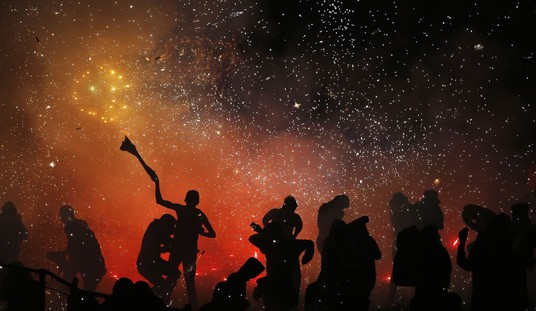Like many agnostic Jews, I have my own experience of Chabad.
I first encountered them years ago on Los Angeles’ LaBrea Avenue, when a rabbi from one of their “Mitzvah tanks” (mobile vans) stopped me on the sidewalk. He asked if I was Jewish and, if so, when was the last time I had “laid tefillin” (put on ritual phylacteries). Frankly, I couldn’t remember if I ever had and recoiled from the invitation. I was again accosted by one of their number – with the same invitation – in front of the Western Wall in Jerusalem. This time I let him do it. Hey, when in Rome….
But this all meant little to me beyond minor cultural/anthropological interest until I again met some Chabadniks in LA who were helping substance abusers. For scraggily bearded “whackos” dressed in weird hats and ill-fitting Eighteenth Century Polish business suits they seemed to be going about it in a surprisingly sympathetic and even modern way. Later – I was then researching my novel about Jewish fundamentalism Raising the Dead– I joined a study group led by a Chabad/Lubavitcher rebbe in Westwood. Most of the members were from the music business, cool characters in trendy haircuts out to find God (or G-d, as they would have it). These dudes and dudettes – guilty perhaps about living lives of sex, drugs and rock & roll – were on the edge of self-parody, but the rabbi was able to engage with them on their “groovy” level and his own spiritual one simultaneously. I was impressed. (It is important to remember about Lubavitchers that they are rather different from other Hasidic sects that tend to be insular. The Chabadniks emphasize outreach, not just to Jews but to all in need.)
Still later, my wife and I, though both agnostics, thought we should do something for the Jewish education of our five-year old daughter, for cultural reasons at least. Most of the Sunday schools we investigated, however, were pretty pathetic and scarcely educational enterprises until we discovered “Chabad of Mt. Olympus.” We giggled at the humorous name, which derived from the location of the rabbi’s house in an aging Los Angeles tract development, but we enrolled our daughter in the school. It was a good experience, even if we had to put up with a lot of atrocious food at various Passover events, etc. (Cuisine is not Chabad’s long suit.) But the school was educational. Trailing behind my daughter, I learned a few things about my tradition myself, and yet nothing was ever imposed on me. I wasn’t even really proselytized.
And that’s the point. Chabadniks really are religious Jews in the best sense. Whether we admit it or not, Reform Jews from my background are hardly religious at all. It’s more of a social club. There’s nothing wrong in that, of course, as long as you are honest about it. But it should give a hint why the Chabadniks are more mainstays in the War on Terror than Reform Jews whose values and views often veer more towards John Kerry than Moshe Dayan.
Which leads me to the topic of the hour – Mumbai. It’s clear the young Lubavitcher couple murdered by the terrorists, Rabbi Gavriel Holzberg and his wife Rivka, were the finest of human beings. They were dedicated to promoting goodness in the world in the deepest spiritual sense. They wished only the best for all humanity and also did their best to encourage it, in fact gave their lives for it. You don’t have to believe in G-d or even God to understand that. Their horrifying deaths reminded this agnostic that there is indeed something called evil in the world.
So now what do I do? What, indeed, do we all do?
UPDATE: The Times of India and other sources are reporting the terrorists did thorough reconnaissance of the Mumbai Chabad Center in advance of their action, apparently staying there disguised as Malaysian students, no doubt under the good offices of the Holzbergs. Somebody should tell the New York Times who, as of this writing, is still reporting the Jewish center as an “unlikely target.” In fact, at first the Times seemed to disbelieve the center could have been a target at all. But that’s no surprise. They have missed Jewish target stories, even the most important ones, in the past:
The reason is that the American media in general and the New York Times in particular never treated the Holocaust as an important news story. From the start of the war in Europe to its end nearly six years later, the story of the Holocaust made the Times front page only 26 times out of 24,000 front-page stories, and most of those stories referred to the victims as “refugees” or “persecuted minorities.” In only six of those stories were Jews identified on page one as the primary victims.
Nor did the story lead the paper, appearing in the right-hand column reserved for the day’s most important news – not even when the concentration camps were liberated at the end of the war. In addition, the Times intermittently and timidly editorialized about the extermination of the Jews, and the paper rarely highlighted it in either the Week in Review or the magazine section. [bold mine]
As the saying goes, the more things change, the more they remain the same.









Join the conversation as a VIP Member